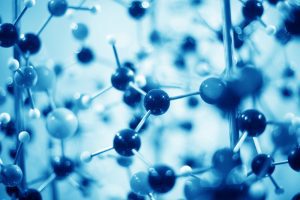 Mysteries
Mysteries  Mysteries
Mysteries  History
History 10 Surprising Stories About the Texas Rangers
 Humans
Humans 10 Philosophers Who Were Driven Mad by Their Own Theories
 Miscellaneous
Miscellaneous 10 Video-Game-Worthy Weapons and Armors from History
 Weird Stuff
Weird Stuff 10 Psychics Who Accurately Predicted Wartime Events
 The Arts
The Arts 10 Pieces of Art Inspired by a Broken Heart
 Health
Health 10 Science Fiction-Sounding New Medical Treatments
 History
History 10 Surprising Facts About the Father of Submarine Warfare
 Space
Space Ten Astonishing New Insights into Alien Worlds
 Weird Stuff
Weird Stuff 10 Bizarre Summer Solstice Rituals Still Practiced Today
 Mysteries
Mysteries Top 10 Haunting Facts About the Ghost Ship MV Alta
 History
History 10 Surprising Stories About the Texas Rangers
 Humans
Humans 10 Philosophers Who Were Driven Mad by Their Own Theories
Who's Behind Listverse?

Jamie Frater
Head Editor
Jamie founded Listverse due to an insatiable desire to share fascinating, obscure, and bizarre facts. He has been a guest speaker on numerous national radio and television stations and is a five time published author.
More About Us Miscellaneous
Miscellaneous 10 Video-Game-Worthy Weapons and Armors from History
 Weird Stuff
Weird Stuff 10 Psychics Who Accurately Predicted Wartime Events
 The Arts
The Arts 10 Pieces of Art Inspired by a Broken Heart
 Health
Health 10 Science Fiction-Sounding New Medical Treatments
 History
History 10 Surprising Facts About the Father of Submarine Warfare
 Space
Space Ten Astonishing New Insights into Alien Worlds
 Weird Stuff
Weird Stuff 10 Bizarre Summer Solstice Rituals Still Practiced Today
Ten of the Wildest Scientific Discoveries of 2022
2022 has been a hell of a year. For most of the world, it was the first year that things properly opened up after lockdown—a chance for our lives to hopefully go back to normal. And for scientists and researchers all across the globe, that meant a chance to go back to the lab full-time.
Yes, 2022 has been a busy old year for science. Over the past twelve months, we’ve seen tremendous advances in immunology research, huge breakthroughs for space travel, and, in just the past few weeks, tantalizing evidence that nuclear fusion could be a possibility here on Earth. But it’s also been a year for the surreal and unexpected, like rhino-sized turtles and nose-picking primates.
Here are ten of the most bizarre and exciting discoveries that made headlines this year.
Related: Top 10 Strange Scientific Studies
10 Researchers Teach Brain Cells to Play Pong
Brain cells are fascinating things. In 2022, researchers from Melbourne’s Cortical Labs set about experimenting with some as part of the DishBrain project. They grew synthetic neurons in a petri dish and then allowed them to develop on a micro-electrode array chip. These chips are well suited to this sort of task because they can electrically stimulate the cells while monitoring their activity.
As brain cells grow, they branch out, link together, and form neural networks like the ones in the brain. Once this happened on the chip, the researchers hooked DishBrain up to a computer and ran the game, Pong. Every time DishBrain performed well, like the paddle making contact with the ball, the neurons received a positive stimulus through the chip. But poor play resulted in a negative, entropically unfavorable stimulus.
Within five minutes of this, the neutrons became noticeably better at the game, essentially “learning” to play better. The team described DishBrain as a breakthrough in “synthetic biological intelligence.”[1]
9 T. Rex’s Tiny Arms May Have Been Useful for Sex
The Tyrannosaurus rex was one of the most fearsome predators to walk the Earth. But why did it have such stubby arms? Well, a recent study by scientists in Argentina may hold the answer. They say the tiny limbs helped the giant lizard mate, a handy tool in the throes of passion.
The team came to this conclusion after discovering a new species of dinosaur. Much like the T. rex, Meraxes gigas was an enormous predator with diminutive arms. Fossil evidence shows the beast was around 36 feet (11 meters) long but with a forearm half the size of its skull.
Scientists believe that these Meraxes used their heads and mouths to fight, whereas their arms came in handy during other, perhaps more intimate, acts like holding onto a sexual partner. And if it’s true for Meraxes, then it should follow that the same is true of the Tyrannosaurus. “I’m convinced that those proportionally tiny arms had some sort of function,” explained lead author Juan Canale. “The skeleton shows large muscle insertions and fully developed pectoral girdles, so the arm had strong muscles.”[2]
8 Fetuses Screw Up Their Faces at Kale
Getting children to eat their greens can be difficult at the best of times, but it appears an aversion to certain veggies could go as far back as the womb. In September 2022, advanced imaging techniques revealed that babies in the womb grimace when the mother eats kale. Carrots, however, are said to elicit a much more pleasant reaction.
Scientists from Durham University in the UK used 4D ultrasound to monitor 100 fetuses. The mothers were then given a capsule with either carrot or kale powder inside. On the scans, those who were fed carrots seemed almost to laugh with joy. But the kale-eating babies screwed their faces up in disgust.
Scientists have long suspected that unborn babies experience taste when they ingest nutrients, but until recently, studies only focused on behavior after birth. According to author Beyza Ustun, this study “is the first to see these reactions prior to birth.”[3]
7 Turns Out You Can Smile Yourself Happy
A sweet entry here at number seven. For years it has been said that smiling makes you feel a little more cheerful, and in 2022, psychologists found it to be true.
The Many Smiles Collaboration, headed by Nicholas Coles of Stanford University, took almost 4,000 volunteers from 19 countries and asked them to smile using different methods. Some smiled naturally, using the muscles around their mouth. Others mirrored an actor. And the third group held a pen between their teeth to stimulate the same muscles we use when we smile. They were then asked to rate their happiness as they smiled and as they looked neutral. They were also shown images of pleasant things to judge their happiness levels, like puppies, kittens, and flowers.
Coles found little emotional difference for the forced smilers with a pen in their teeth. But the natural smilers did report feeling slightly more cheerful. Those happy grins tap into something known as the “facial feedback hypothesis.” Essentially, if your face looks happy, you’re more likely to feel good inside—whereas frowners tend to become a little sadder.[4]
6 Aye-Ayes Use Their Long Middle Fingers to Pick Their Noses
The animal kingdom is home to all kinds of strange and unexpected phenomena. One such bizarre occurrence is the aye-aye, a small Madagascan primate with a dirty habit: nose-picking. Aye-ayes are known in some cultures as omens of death. If an aye-aye points a crooked, spindly finger at you, then you’re said to be nearing the end of your mortal coil.
But those unnerving digits have other uses aside from marking out the soon-to-be-dead. Aye-ayes use their finger to dig out grubs for a tasty snack. Well, it now turns out they do the same with boogers as well. Scientists looking into aye-aye behavior created a CT scan reconstruction showing just how far back their fingers go when they pick their noses. According to the image, the mammals practically scrape the back of their own brain.
Researchers are now interested to learn why so many animals pick their noses when there seems to be no advantage. To date, over 12 species of primate have been caught in the act, including orangutans, chimpanzees, and, of course, us humans too.[5]
5 Scientists Uncover a New Type of Molecular Bond

In July 2022, physicists in Germany were delighted to announce a never-before-seen breakthrough in particle science. The group from the University of Stuttgart detected a new type of molecular bond between a positive ion and a mammoth particle known as a Rydberg atom. Rydberg atoms occur when an outer electron becomes extremely excited and leaps much further from the nucleus than usual. In some cases, Rydberg atoms can be 1,000 times the size of their regular counterparts.
The scientists achieved this spectacular feat using a cloud of rubidium at a whisker above absolute zero—the temperature at which everything stops moving. They used lasers first to strip some of the rubidium atoms of their electrons, turning them into positively-charged ions, and then to excite other atoms into a Rydberg state.
When ions and Rydberg atoms are together at such low temperatures, they begin to interact. The ions alter the electromagnetic structure of the atoms, and bonds can form—like the one seen in the Stuttgart experiment. Unlike most known molecular bonds, which measure a fraction of a nanometer, this newly-observed one is longer than some types of bacteria. Definitely a record discovery.[6]
4 Turtles the Size of Rhinos Lived in Prehistoric Europe
When a newly-discovered species gets named after a biblical sea monster, you know it must have been gigantic. Leviathanochelys aenigmatica is thought to have measured around 13 feet (4 meters) in length when it roamed the oceans around what is now Europe. The marine behemoth lived some 83.6 to 72.1 million years ago.
Scientists named the rhino-sized beast after Leviathan, a primordial sea serpent with multiple heads. It was discovered after a pelvis and parts of a carapace were unearthed in the Cal Torrades area of northeastern Spain. Until then, scientists had only ever seen evidence of giant marine turtles around the Americas. The team that uncovered L. aenigmatica was surprised to find another of such enormity in Europe.
Appearing around six million years after L. aenigmatica, Archelon is still the all-time largest known marine turtle. But this newly-found colossus poses stiff competition. As the researchers explained in their study: “The discovery of the new, gigantic and bizarre chelonioid Leviathanochelys aenigmatica from the Middle Campanian marine deposits of the Southern Pyrenees, which rivals in size to Archelon, sheds a light on the diversity of marine turtles and on how the phenomenon of gigantism in these groups was also occurring in Europe.”[7]
3 The Cannibals of Prehistoric Britain
In 2022, we learned that at one point in time, the UK may well have been populated by cannibals. Scientists discovered human remains at Gough’s Cave in Somerset and Kendrick’s Cave in Llandudno. Both date back to around the end of the last ice age. These bodies provided the oldest DNA ever found in Britain, and through analysis, molecular biologists were able to find out a lot about the country’s prehistoric forebears.
The team was surprised to learn that the DNA shows there were two groups of humans living in Britain at that time. Based on the evidence found in Kendrick’s Cave, the first lived mostly on fish and other marine life. But the one in Gough’s Cave showed signs of cannibalism. This potential people-eater was found to be of the same lineage as Goyet Q2—a 15,000-year-old body discovered in Belgium.[8]
2 World’s First Synthetic Embryo
The use of stem cells in scientific research is still a contentious topic. But in August, a group from the Weizmann Institute in Israel used them to build the first-ever synthetic embryo. No sperm or eggs were involved in the creation process, and there was no fertilization. Instead, researchers took stem cells from mice and guided them to amass into an embryo-like structure, complete with a fledgling brain, intestinal tract, and beating heart.
In their paper, the team explained how this first-of-its-kind breakthrough opens the possibility for further insight into embryonic development. But they also reckon that it could also lower the number of experiments carried out on animals in the long term. Similar technology, they hope, may one day be used to grow cells and tissue for human transplants. The breadth of potential uses is certainly impressive.
“Remarkably, we show that embryonic stem cells generate whole synthetic embryos, meaning this includes the placenta and yolk sac surrounding the embryo,” explained study lead Jacob Hanna. “We are truly excited about this work and its implications.”[9]
1 Male Mason Wasps Fight Predators with Their Penis Spines
Just imagine the scene. You’re a hungry tree frog in search of a snack. You discover a tasty-looking mason wasp, get ready to take a bite, and it stabs you with its barbed penis.
Until recently, scientists believed only female mason wasps could defend against predators. The women can sting and use their toxins, whereas the men had no means to fight back. But now they know this to be untrue. Along his penis, the male has two retractable genital spines that they use against dangerous foes.
It was Misaki Tsujii, a graduate student in Japan, who first made the discovery. She was handling some as part of a different study into their life cycles when unexpectedly, one of them pricked her finger. To find out more, scientists watched what happened when they fed mason wasps to hungry Japanese tree frogs. The insects fought back using their mandibles and their spiky penises. Almost 65% of the wasps were still consumed, but 35% survived the ordeal. They also repeated the experiment with different mason wasps whose genitals they had removed. Unsurprisingly, without their retractable penis stabbers, the wasps with no manhood were eaten more quickly.[10]








